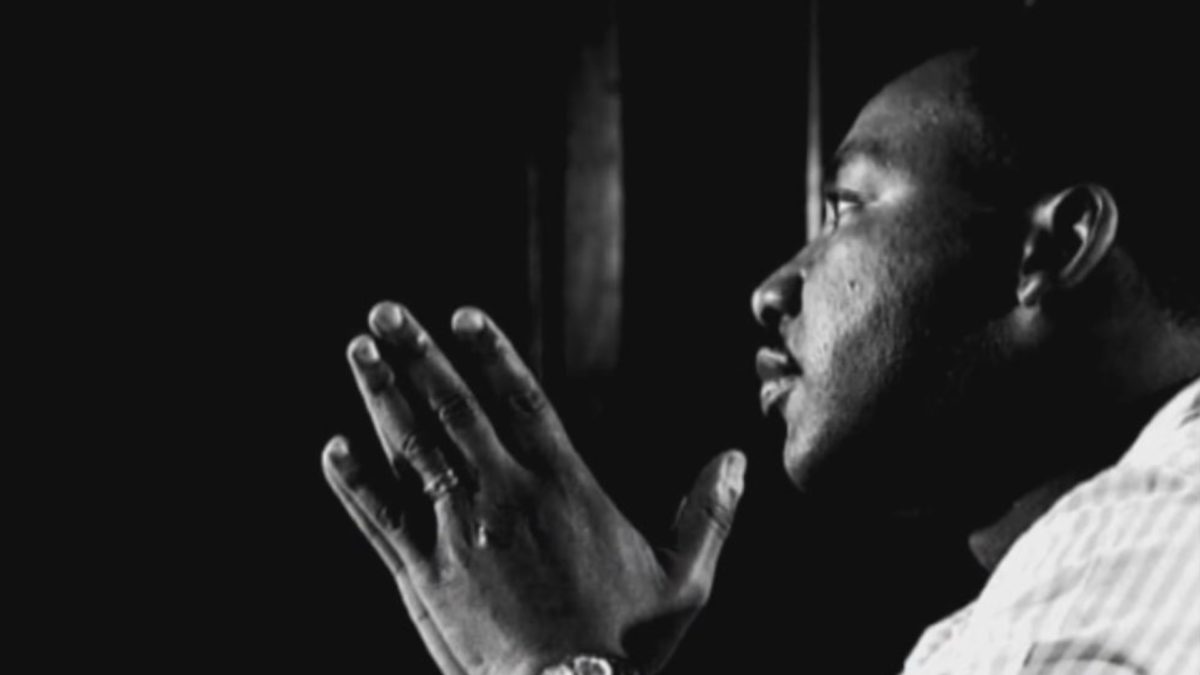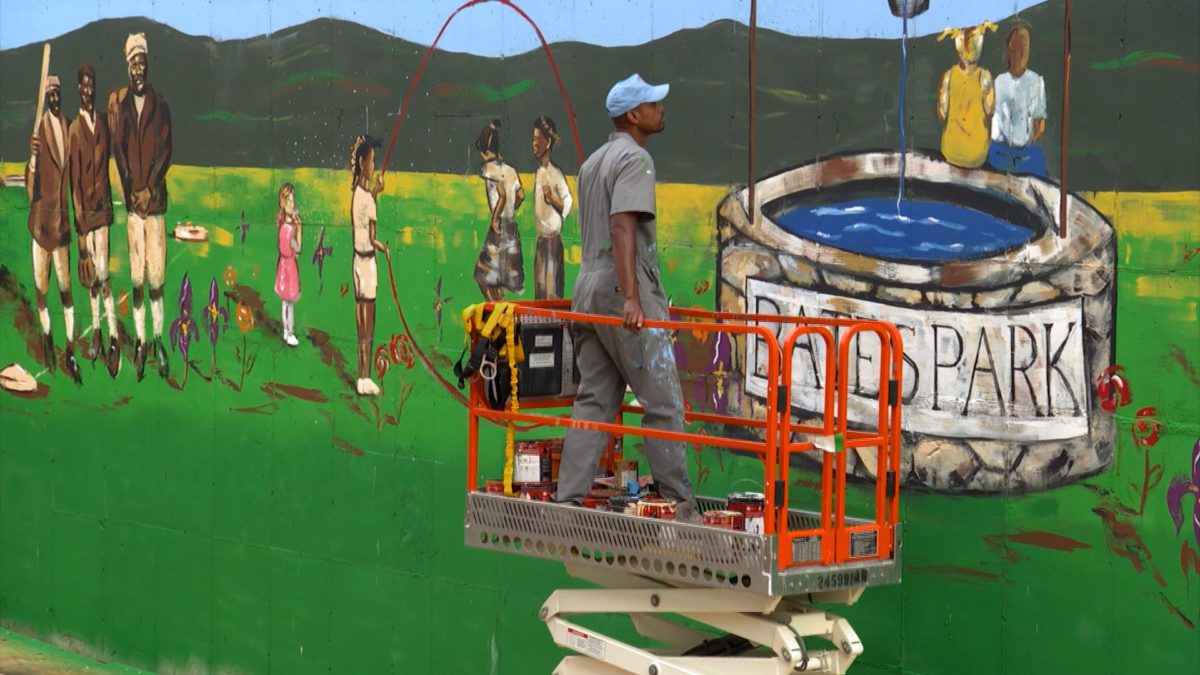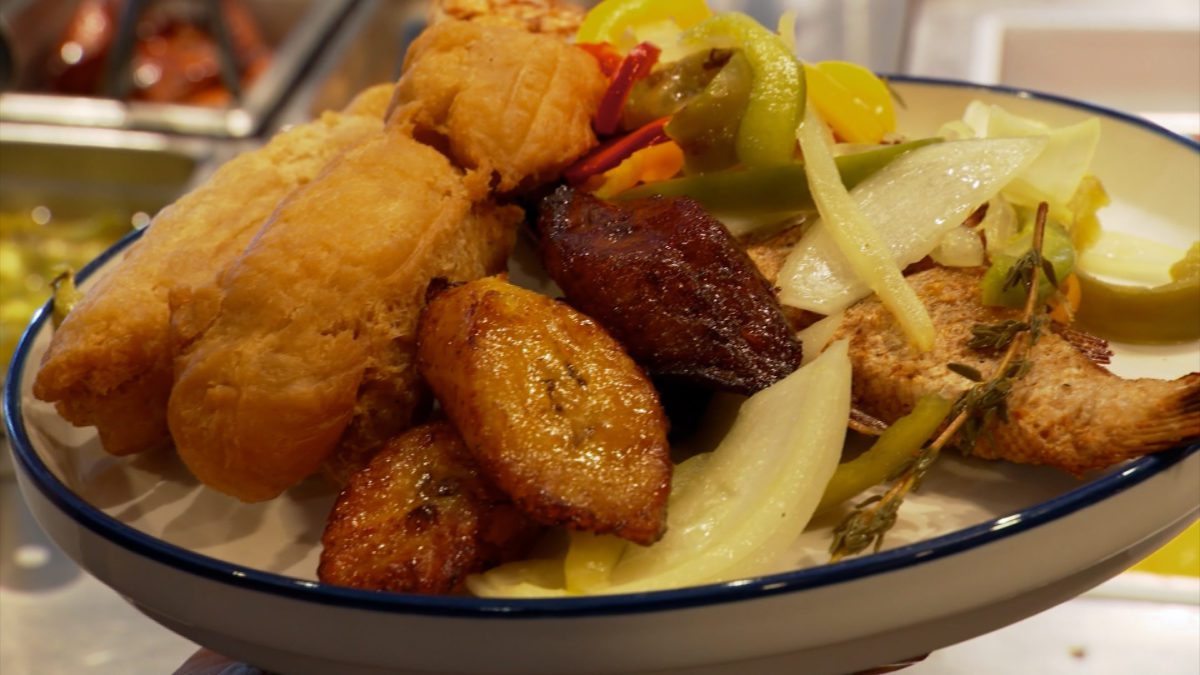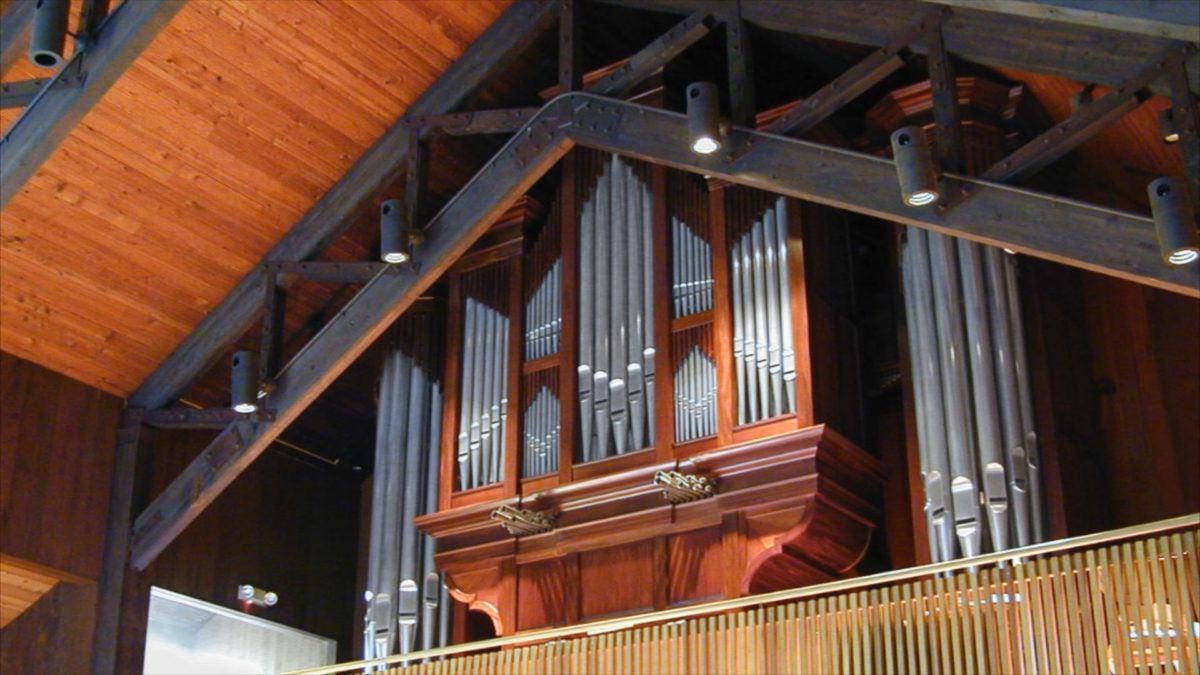Episode 3728
Don't have the PBS App? Click Here
Episode Transcript
- [Announcer] Tennessee Crossroads is made possible in part by- - [Phil] I'm Tennessee Tech President Phil Oldham. Here in Cookeville, Tennessee's college town, we are bold, fearless, confident, and kind. Tech prepares students for careers by making everyone's experience personal. We call that living wings up. Learn more at www.tntech.edu. - [Announcer] Discover Tennessee Trails & Byways. Discover Tennessee's adventure, cuisine, history, and more made in Tennessee experiences showcased among these 16 driving trails. More at TNTrailsAndByways.com. - This time on Tennessee Crossroads, we get a taste of the Caribbean without leaving Tennessee. Then, we'll meet a talented Madison mural artist. We'll travel to Memphis to explore the National Civil Rights Museum. And finally, discover how world-class pipe organs are created near Chattanooga. Hi, everybody, I'm Joe Elmore. That's our lineup for this edition of Tennessee Crossroads. Do you ever wanna get away to somewhere warm and tropical? Well, if the Caribbean isn't quite in your budget, Miranda Cohen visits a place where you can have an island getaway without packing a bag. - We are at Riddim n Spice in North Nashville, Tennessee. Riddim n Spice is a play on words. It's a play on words Riddim. Riddim is how we say rhythm in the the islands. And yeah, so, it's like food, music, rhythm, spice. Put it all together, Riddim n Spice. - We're Jamaican. So, Riddim is the other, is the Patois way of saying rhythm and spice. We've always felt that there's a connection between food and and music. We're in music city, so it was a natural way of us giving our story, our heritage, our culture in music city. - [Miranda] Brothers Kamal Kalokoh and Rashean Conaway always knew they wanted to bring a little taste of the islands to others. And when you see this bright turquoise building in North Nashville, you will know you are about to embark on a culinary journey. - Growing up in Boston where it's not just Jamaicans in my neighborhood. It was Jamaicans, Trinidadians, people from Barbados, people from Puerto Rico, Cuba. We wanted to let people know that all the foods are very similar from island to island. And so, this is truly like a celebration of Caribbean culture. - We realized that, you know, we wanna do our own spin on Caribbean food. Not just specifically Jamaican food, but the Caribbean aspect of it where we can show highlight, you know, Dominican food, Haitian food, Besian food, all these different aspects of it. - [Miranda] The brothers grew up cooking alongside their mother and grandmother who taught them an appreciation for a blending of exotic spices and flavors and how to bring them all together on a plate. - You can get Puerto Rican rice or Haitian rice or Jamaican rice. You can get different proteins, add different sauces like curry, honey jerk sauce, jerk sauce, brown stew sauce. These are popular sauces throughout the islands. And then, we have a more traditional meat and two Caribbean options where you can get like jerk chicken and two sides like your macaroni pie or rice and beans and that kind of thing. - [Narrator] So, many choices native to the islands. And one very popular item is the slow cooked delicacy oxtail. - And so we have whole red snapper fish. We also use shrimp. We do lamb, sell lots of lamb, sell lots of oxtails. Oxtails we can't keep in store. That's probably our biggest seller, oxtails. - [Narrator] Thanks to the abundance of fresh vegetables and exotic fruits found on the islands, the menu is filled with lots of flavor packed plant-based options too. You can get an array of very fresh proteins here at Riddim n Spice all native to the islands. But one of the most popular dishes is not actually a protein. In fact, it is a fruit. It is a jackfruit that grows all throughout the Caribbean. Well here, they put barbecue sauce on it. It is entirely vegan and it's delicious. - And then we have jackfruit, which is a fruit in the islands and in Southern Asia. It's huge. It's like this big. Has a rough surface on the outside. When you cut the inside, there are these pods that are similar to the taste and flavor of mango. And then the outside of those, you have fiberous textures and meaty pieces that when you steam them or fry them or play around with texture, it can be similar to pulled pork or you know, like a mint meat. You know, jackfruit is something that grows all over the island, but people eat it more so like a fruit. And so it's a good thing that we could, you know, be creative and kind of come up with a dish that people love. - Yeah. So, when I come to Riddim and Spice, I love to get the jackfruit. So good, so flavorful. The mac and cheese is so amazing. I like the cabbage, rum cake. Everybody's so kind and pleasant and just kind of telling you what it is. If you have questions about the menu, they're very helpful. - They love it 'cause there's comfort food. From the oxtail to our chicken, it's very- Southern cooking is not far off from Caribbean food at all. It makes you feel like you're at home. - [Miranda] A bold mixture of garlic, onions, and peppers, even the sweet and smoky scotch bonnet pepper and the spicy habanero, all blend together to create a richness of flavor and culture. And that is exactly what the brothers envisioned. - It's a different flavor profile from what you expect when you go to any restaurant and how people are cooking. I just love diversity. - There are so many dishes on the menu and more dishes that we're gonna put on the menu that are very nostalgic to me and very dear to me. - They're surprised when they walk through the door aesthetically, and then they taste the food and it all makes sense to them. And we have a lot of repeat customers. - Thanks a lot, Miranda. In our next story, Laura Faber meets a local artist who likes to focus on the underrepresented in our society. Omari Booker just finished a beautiful mural as a gift to a new neighborhood in Madison. One that's affordable and historically significant. - [Laura] If you are lucky enough to see Omari Booker painting, you will probably see him working with oil base paint. He uses acrylic and charcoal and other things too, but oil is his medium of choice. This is his latest work. A mural 55 feet long and 15 feet tall on a wall in a new apartment complex in Madison. Though the style may vary, what is constant about Omari's work is the story. There is always a story. - I want to portray things, portray things as they are. And also looking at things that are traditionally maybe underrepresented. So, working around things like incarceration. That was easy to get close to 'cause that was part of my story. But I've also done a lot of work around people experiencing homelessness. - [Laura] Omari's own story is something. Born in Virginia, his family lived in St. Croix for a bit, but Omari was raised in Nashville. His first art class was in high school, and he continued his art education alongside his math classes, while a basketball star at Belmont University. Then Omari was arrested for drug possession. He served three years of a 15 year sentence and eventually graduated from TSU with a degree in graphic design. - That's often how I describe my first commissions. My first commissions were for soap and honey buns and toothpaste. It's a lot of bartering. So, I did a lot of drawing for people and then I started creating my own narrative and documenting what the prison looked like and the people, yeah, just kind of how, how different it actually was from the perception of what people think that it is. - Now, the wall Omari is painting on isn't just any wall. It's in the middle of a neighborhood on land that holds generations of history for one Nashville family. The family at the center of the mural is that of Randall Bates. His family lived on this land for generations. - Bart Bates was the original owner. He was a slave. He was a slave actually in Gallatin, Tennessee from what my grandfather told me. And when slavery was abolished, he was given this land by a slave owner to raise his family, farm the land. And that's what he did. It was a thriving neighborhood. I mean, above the street was, you come up to the left there. There was a baseball field, and that's where my grandfather played baseball, the Bravo baseball field. My dad played there. - [Laura] And there is a story about a well on the land, a well featured in Omari's mural. - The well was kind of where this building is. It was a well. That's where they got their drinking water. And the stories my grandfather told me is that all the neighbors in the general area would come miles and miles and miles to get the well water. 'Cause this was like the only source of water in this area. - [Laura] Bates and his family recently sold the land to a developer with some strings attached. It must offer affordable housing. - We sit down and as a family and looked at it and it just made sense. All the development that's going on around Nashville, you know, it's not affordable anymore to what I call behind the scenes people. They gotta live somewhere. Where these people gonna live? I mean, these people are in our lives every day. You know, they're at the restaurants. They cut our grass, they clean our houses, they clean buildings. They are everywhere. Where they're gonna live? - Enter LDG Development and longtime Madison resident and former Metro Council Woman, Nancy Van Reese. We are at the Briarville Apartments. And I say the Briarville because Briarville used to be actually an encampment of freed slaves and emancipated folks in Tennessee. And the little street named Briarville was the last thing that we had showing that history. And so, we had the opportunity to make sure that this place was called the Briarville outta respect for the history of the Briarville encampment. - LDG's mission is that everyone deserves a quality place to live and builds affordable neighborhoods all over the country. The community center here is named after Randall's great-grandfather. Locally created art hangs inside featuring the musical history of Madison nearby Aqui station and Cedar Hill Park. And then, there is the mural. - We were looking for an idea how we were gonna pay tribute. We talked about, named some of the areas in the building after my family and talked about naming some streets. But they wanted to do more. It just wanted to do a little bit more. And so, the idea of the mural came up, and featuring my family. - A chance encounter between Nancy and Omari sealed the deal. - I approached Omari with the idea of telling the history of the Bates family from 1863 to 2023. The mural is funded by the LDG Foundation, Amazon's Community Fund, the Memorial Foundation, and the historic foundation. The project is something that we're all extremely very, very proud of. - It's emotional, you know. It's hard to believe. If we could do little small things like this and just kind of sprinkle these little ideas around, you know, not only here in Nashville, but everywhere. - The project and the story of Briarville couldn't be more inspirational for Omari Booker. - Overwhelmingly grateful. Yeah. Goosebumps. Yeah. To be a part of, of the people that make the place special, so, I'm grateful to be a part of any project that's making more space for the people that make the city what it is. - Many thanks, Laura. Well, next, we honor Black History Month with a visit to the National Civil Rights Museum in Memphis. Linn Sitler toured the exhibits that are both emotional and inspirational. - [Linn] The Lorraine Motel. During the era of Jim Crow, it served as a place where African Americans could rent a room to stay the night. It was supposed to be a safe haven, even in the South, but it was no safe haven for the world's greatest civil rights leader, Dr. Martin Luther King Jr. On April 4th, 1968, an assassin's bullet abruptly ended his life as he stood on the motel's balcony. Constructed around the Lorraine Motel, the National Civil Rights Museum opened in 1991 documents Dr. King's life and teachings. However, today's museum is not the one of decades past. - So, it was a phenomenal museum before the renovation in 2014. But the intent with the renovation was to put more technology in there. We talked to our guests and said, so what would make this even more impactful, more powerful, you know, more of a transformational experience. And they talked about being able to get close with the exhibits to be able to touch. And so, we took that information and really created a new museum. - Faith Morris, Chief Marketing and External Affairs Officer of the National Civil Rights Museum recommends that you tour the museum like it's laid out in historic chronological fashion. - It's a linear experience. You go through a journey through history. And Dr. King doesn't start this journey. Actually, we talk about slavery. Jim Crow. We talk about all of what happened during that time. So, you find that there's a story in each of the galleries that tells you a really important part of what was going on during that time in history. You go from there to Brown versus Board of Education and we show you that. And what you'll notice in many of the galleries, there's always statistics. 'Cause we think the more facts you know about what was happening during that time, it helps you understand the environment then. What was going on? What were people fighting against? So, that journey really takes you on through the museum. Dr. King, you see him for the first time when you get to the Montgomery Exhibit, where you see Rosa Parks. But intentionally, we tell you more than Rosa Parks story. This is not any one story. It's that understanding, it's that humanity, it's that empathy that we talk about understanding that we all are humans and we contribute to this nation in a way that just doesn't work the same anywhere else. There's this huge wall of film and it's called a world in transition. And it shows all the movements around the world that were inspired by the Civil Rights Movement. You know, it was the gay movement, it was the seniors movement, it was what was going on in Japan and China and Mexico, Chicago. You know, it showed that this whole world is impacted by the same things that we are impacted with. Folks are just trying to fight for freedom. So, we try to tell those stories. We have a lot in common. So, there are beautiful messages about that and we try to bring that out. - The museum's true to life statues, gigantic photo murals and interactive exhibits bring to life the history of the civil rights movement from slavery through the modern day oppression of various people everywhere. - But we are relentless in making sure that folks understand that unless we do better. And we hopefully inspire people because of what has happened in history and what is happening now to take a stand. - The museum's journey propels you back in time through Montgomery to the bus boycotts, to the horrific bombings in Birmingham, to the age of lunch counter sit-ins and freedom riders. - I was here walking through one day and there was a grandfather and his son. And he asked his grandfather, he said, did you know about all of this? And he said, well, some of it. Some of it I did. And the little boy, he was about nine. He said, well, what did you do? And the look on his grandfather's face, you know, it just, it just tugged at you. And that little boy was serious because he just did not understand why things like this happen and we stand by and do nothing. So, he made a huge impression on his grandfather. He made a huge impression on me. So, we really stand on trying to understand the facts. What is happening in this world? What's happening in your community? What's happening in your family? And see what we can do better. - Only a handful of American companies build pipe organs using time honored European methods. To the owners of Richard's folks and company, while creating some of the world's best is a matter of pride and precision craftsmanship. - It's hundreds if not thousands of pipes playing an audible sound, a physical sound which develops in the room and it surrounds you. So, your body actually feels the the sound, especially the base tones. - [Narrator] It was that sound experience that led Bruce folks to start playing and later hand building traditional pipe organs. After apprenticing and working for a veteran builder, he and Ralph Richards started their own company just outside of Chattanooga. - It really doesn't matter where you build organs because they all have to be shipped somewhere else. And so, Ralph and I decided that Chattanooga was a beautiful town and it's within 500 miles of 50% of the US population. - [Narrator] Since 1988, Richard's folks and company has been building some of the world's best pipe organs, which today make majestic music and churches around the country and even in England. What's more, they use the same craftsmanship that European builders employed centuries ago. Intricate processes involving a multitude of finely honed skills. - Art and architecture. There is physics, lot of math. There is metal working. And then, of course, there's just music. - [Narrator] Each organ and its environment are unique. So, before any construction starts, there's extensive research and design work. - We start with the architecture of the room. That, sort of, develops the size and the shape of the organ. Some churches don't offer any inspiration. Some offer so much inspiration. We don't hardly do a thing. - [Narrator] Ralph takes over when it's time to start the design of the exterior case of the instrument. - Start with photographs and drawings. And I'll put in CAD drawings of some of our previous organs to start with just to see the scale and the size of it, how it fits into the space. So, we want the organ to look like it's always been there or that it was specifically designed for that space in this time. - [Narrator] Building a single pipe organ can consume up to a year's worth of work. Hand making thousands of parts in the workshop from precisely fabricating rollers that operate the wind chest to hand carving, decorative features that enhance the organ's aesthetics. - We have amazingly talented group of men that work here. Artisans, artists, they came from all over the world. All of them have multiple disciplines. There's not a one of them that just does one thing in this shop. A lot of them have musical backgrounds, some have architectural training. - [Narrator] One organ can contain thousands of pipes, all forged and correctly fashioned from lead and tin alloys. For each pipe to make a certain sound, they get some almost human features. - There's a foot with a toe, a mouth with a lower lip, an upper lip, a tongue or a language. That's the Latin word for it. They have ears on some of them, and some of them have a beard across the bottom here and then the body. - [Narrator] You have to give each and every pipe it's proper voice, which requires skilled hands and ears. - And that pipe is still a little bit slow speaking. And then I'm gonna adjust the flow. That's this little slot here. You can't even see without a microscope what I've done. But you can hear it that the tone is now- It's a more mellow full tone. That's all there is to it. Now, you just repeat and as necessary for 4,000 pipes and you're all done. - [Narrator] Because of their traditional artisan approach to production, Bruce and Ralph can only produce a couple of pipe organs a year. However, don't expect any changes in the name of so-called progress. - As soon as you turn it onto an industrial scale, you lose all control of the details and involvement. So, you know, if we're gonna put our names on it, we wanted it to really reflect the two of us. Well in all of these guys. - Well, with that, we gotta say goodbye for this edition of Tennessee Crossroads, but not before mentioning our website, www.tennesseecrossroads.org, where you can download that PBS app and get to where to find us. Right here, next week, I'll see you then. - [Announcer] Tennessee Crossroads is made possible in part by- - I'm Tennessee Tech President Phil Oldham. Here in Cookville, Tennessee's college town, we are bold, fearless, confident, and kind. Tech prepares students for careers by making everyone's experience personal. We call that living wings up. Learn more at www.tntech.edu. - Discover Tennessee Trails and Byways. Discover Tennessee's adventure, cuisine, history, and more made in Tennessee experiences showcased among these 16 driving trails. More at www.TNTrailsAndByways.com.
Tennessee Crossroads
February 29, 2024
Season 37 | Episode 28
Miranda Cohen gets a taste of the Caribbean without leaving Tennessee. Laura Faber meets a talented mural artist in Madison. We'll travel to Memphis to explore the National Civil Rights Museum. And Joe Elmore discovers how world-class pipe organs are created near Chattanooga.




